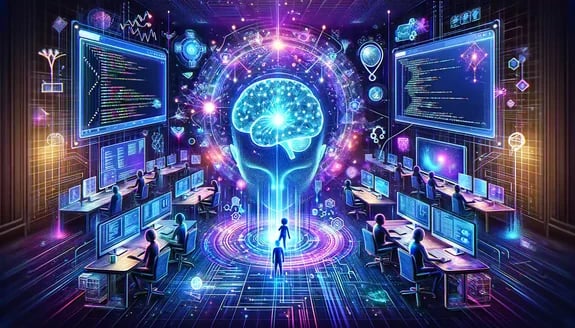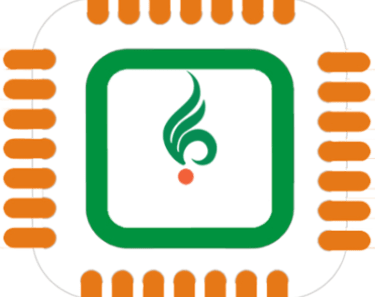Siemens EDA’s AI-Driven Vision for the Future of Electronics
Siemens EDA unveils its strategic shift toward AI-powered, software-defined, and lifecycle-aware design, redefining the future of semiconductor and system development.
6/12/20253 min read


Siemens EDA Outlines Strategic Direction for an AI-Powered, Software-Defined, Silicon-Enabled Future
At the 2025 Siemens EDA User2User event, CEO Mike Ellow shared a compelling strategic roadmap that reflects the future of electronics: a future that is AI-powered, software-defined, and silicon-enabled. This keynote offered a comprehensive view into how Siemens EDA is evolving to meet the increasing complexity of modern semiconductor and systems design.
A Foundation of Growth and R&D Investment
Siemens EDA has experienced notable growth in both revenue and market share over the past two years. This momentum has been strategically reinforced by substantial investment in research and development. In fact, more than 80% of new hires in fiscal year 2024 were allocated to R&D roles, underscoring Siemens’ clear focus on technology innovation and long-term competitiveness.
Rather than diversifying into silicon IP like some competitors, Siemens is strengthening its core areas: full-flow EDA, systems engineering, and advanced simulation. These domains are becoming critical as cross-domain collaboration becomes essential in complex product design.
Expanding Beyond Traditional EDA Boundaries
A pivotal component of Siemens’ strategic shift is the $10.5 billion acquisition of Altair, a leader in multiphysics simulation. This move signals Siemens’ commitment to cross-domain digital engineering—an increasingly vital requirement as products evolve into integrated cyber-physical systems.
With backing from Siemens AG, which is heavily invested in digitalization and lifecycle management, EDA now plays a central role in enabling end-to-end system development that seamlessly integrates software and hardware design.
Software-Defined Systems: A Structural Shift in Design Philosophy
The future of design is software-defined. Siemens EDA recognizes that software has become the primary source of differentiation in electronic systems. This means traditional hardware-first approaches must evolve to support software-driven architectures that are flexible, updateable, and increasingly intelligent.
The design process itself is changing. Siemens is embedding artificial intelligence not just as a feature of end products, but within the EDA tools themselves. AI is being used to enhance verification, accelerate synthesis, optimize designs, and automate repetitive engineering tasks—creating more efficient, intelligent design cycles.
The Role of Multi-Domain Digital Twins
Siemens is advocating for multi-domain digital twins as a central enabler of synchronized hardware and software development. These digital twins integrate data from electrical, mechanical, manufacturing, and lifecycle domains to allow real-time collaboration and continuous validation.
For instance, a software update in an electric vehicle might affect braking behavior or weight distribution. A digital twin helps engineers evaluate such cascading effects before deployment, reducing costly late-stage changes and improving overall product performance.
Silicon Lifecycle Management: Enabling Data-Driven Adaptability
Siemens is transforming silicon from a fixed component into a dynamic, adaptive asset. Through embedded monitoring technologies, chips can now collect real-world usage and performance data. This feeds back into the digital twin, enabling predictive maintenance, performance optimization, and real-time adaptation through over-the-air updates.
This approach supports a lifecycle-aware model of development—where silicon is not only designed for function, but also for adaptability, longevity, and continuous improvement.
AI Infrastructure and Domain-Specific Automation
To support growing design complexity, Siemens is building a secure AI infrastructure anchored in protected data lakes. These repositories aggregate verified simulation, test, and design data while ensuring intellectual property protection.
Siemens is training domain-specific large language models and AI agents on this data to automate tasks like script writing, testbench generation, and design space exploration. The upcoming Siemens AI platform will provide unified, intelligent support across the entire design lifecycle, further enhancing productivity and decision-making.
3D ICs, Advanced Packaging, and Cloud-Scale EDA
As the industry shifts toward heterogeneous integration and 3D IC design, Siemens is optimizing its toolsets to support complex chiplet architectures. These enhancements enable higher accuracy and scalability by using AI-driven workflows.
In parallel, Siemens is democratizing advanced design capabilities through enterprise-scale, cloud-enabled EDA platforms. These tools allow distributed teams—including less experienced engineers—to collaborate on high-end projects, bridging skill gaps and accelerating time-to-market.
Addressing Global Trends: Sustainability and Geopolitical Strategy
Siemens EDA is also responding to global challenges, including regionalization and environmental sustainability. With many countries investing in domestic design and manufacturing capabilities, the company is supporting regional flexibility and IP protection.
On the sustainability front, Siemens is integrating low-power design methodologies, energy-efficient architectures, and system-level optimization techniques to reduce the carbon footprint of increasingly compute-intensive products.
Conclusion: A Comprehensive, Lifecycle-Aware EDA Vision
Siemens EDA is redefining the boundaries of electronic design. The company’s vision is not limited to incremental improvements—it is centered around transforming how systems are conceived, built, and evolved. Through investments in AI, digital twins, secure infrastructure, and lifecycle management, Siemens is leading the transition to an EDA model that is adaptive, software-centric, and future-ready.
This strategy places Siemens EDA at the forefront of enabling the next generation of intelligent, efficient, and sustainable electronic systems.
Source - Semiwiki
QUICK LINKS
NEIL RAO TOWERS, 117 & 118, Rd Number 3, Vijayanagar, EPIP Zone, Whitefield, Bengaluru, Karnataka 560066
200/2, Tada Kandriga, Tada Mandalam, Tirupati District - 524401
Locations

